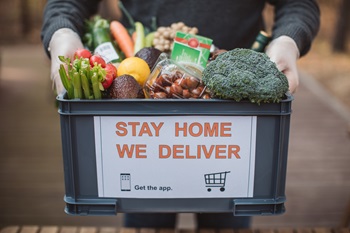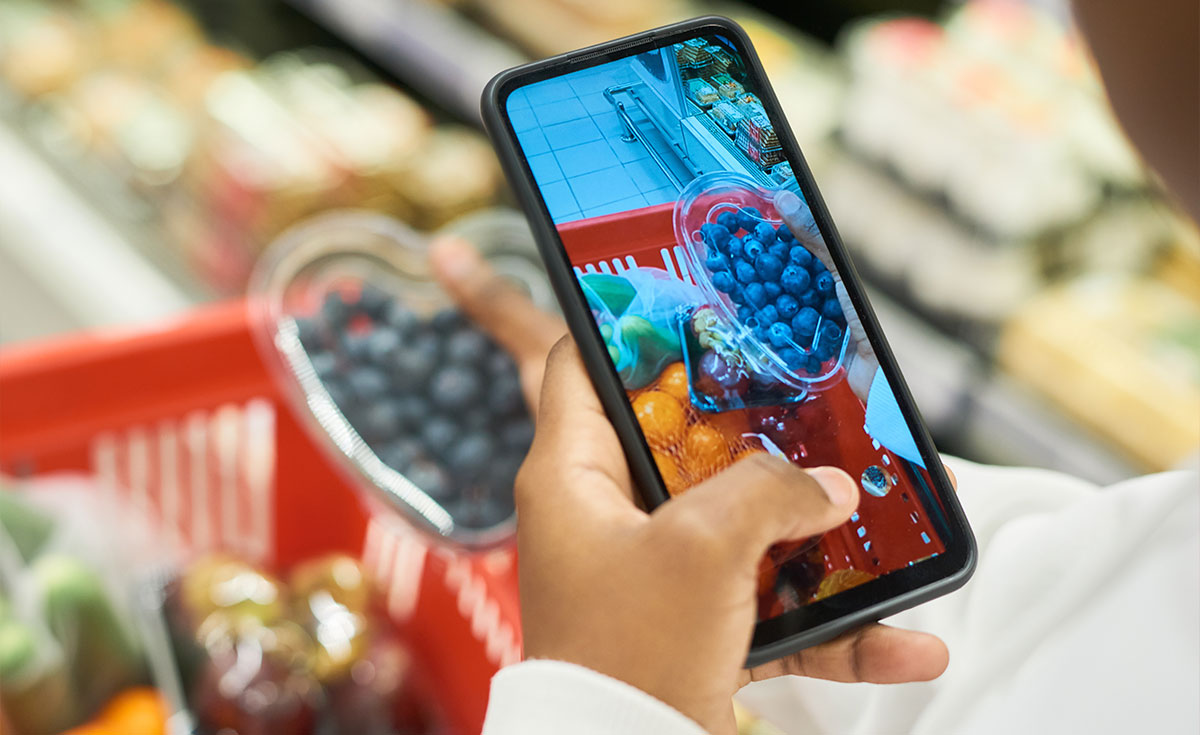By Doug Baker, Vice President, Industry Relations, FMI

In hindsight, it’s interesting how food retailers described their ecommerce sophistication a year ago in the FMI Food Retailing Industry Speaks report.
Only 4% of responding companies with online sales considered themselves to be very sophisticated in selling or marketing products to consumers online. Slightly over half described their organizations as somewhat sophisticated, and about a third said “not very.”
Jump ahead to 2020, and sophistication may not have been the most important factor during the early months of the pandemic. Probably more crucial was the ability to ramp up capabilities quickly. Retailers had to get ready for prime time as the pandemic hit.
A large share of grocery shoppers shifted from in-store shopping to ecommerce with delivery or pickup. The Speaks 2020 report outlines the dramatic result. In the first months of the pandemic, online sales surged by more than an eye-popping 300%, according to the research.
Retailers Advanced Capabilities During Pandemic
While not everything about ecommerce went smoothly at first, food retailers rose to the occasion in remarkable ways. The latest Speaks report identifies how retailers handled huge demand increases during the first part of the COVID-19 crisis.
- The great majority — 83% — added more staff to handle online fulfillment, while 37% devoted more staff for delivery of online orders.
- About a quarter of retailers offered more SKUs online.
- Some retailers expanded the ways they get products to shoppers, with 19% adding store pickup capabilities, and 16% adding delivery by another organization.
Progress in 2020 Built on Earlier Initiatives
Even as they accelerated ecommerce capabilities in 2020, retailers were building on already significant investments from prior years.
The 2020 Speaks report takes a deep dive into the state of ecommerce in 2019, and finds retailers were already making solid gains in that year.
About half of responding companies reported having online sales in 2019, and those sales represented a growing share of their businesses. Online sales in 2019 represented an average of 2.5% of total sales, up markedly from an average of 1.4% in 2018. The actual percentages differed widely by retailer, ranging from zero to almost 9% of sales.
In 2019, almost one-half of food retailers involved in ecommerce experienced a sales increase of more than 20%. The number of online SKUS reached an average of more than 32,000, up from 28,000 in 2018. The average online transaction size was $104, considerably higher than the in-store transaction size of $38.
Industry Forecasts Ongoing Ecommerce Advancement
It’s too early to know how the key ecommerce data points will look for full-year 2020, but I’m betting they will show significant gains in momentum.
That’s what Speaks respondents said as well. Some 92% of those who had online sales in 2019 expect their company’s online sales to increase in 2020. About two thirds expect shopper online basket size to increase for the full year 2020, and 61% predict that online trip frequency will grow as well.
Retailers Have Opportunity to Enhance Experiences
Even as they forecast continued growth, retailers still aren’t claiming to be very sophisticated in ecommerce, Speaks found. I have a feeling they are more sophisticated than they think.
However, as mentioned earlier, maybe extreme sophistication isn’t what’s most important right now. Perhaps adaptability is even more important. Retailers are showing tremendous adaptability during this crisis period.
With ecommerce a bigger part of the landscape, now is a good time for food retailers to take stock and plan their next level of investments to enhance experiences for customers.


 Industry Topics address your specific area of expertise with resources, reports, events and more.
Industry Topics address your specific area of expertise with resources, reports, events and more.
 Our Research covers consumer behavior and retail operation benchmarks so you can make informed business decisions.
Our Research covers consumer behavior and retail operation benchmarks so you can make informed business decisions.
 Events and Education including online and in-person help you advance your food retail career.
Events and Education including online and in-person help you advance your food retail career.
 Food Safety training, resources and guidance that help you create a company food safety culture.
Food Safety training, resources and guidance that help you create a company food safety culture.
 Government Affairs work — federal and state — on the latest food industry policy, regulatory and legislative issues.
Government Affairs work — federal and state — on the latest food industry policy, regulatory and legislative issues.
 Get Involved. From industry awards to newsletters and committees, these resources help you take advantage of your membership.
Get Involved. From industry awards to newsletters and committees, these resources help you take advantage of your membership.
 Best practices, guidance documents, infographics, signage and more for the food industry on the COVID-19 pandemic.
Best practices, guidance documents, infographics, signage and more for the food industry on the COVID-19 pandemic.
